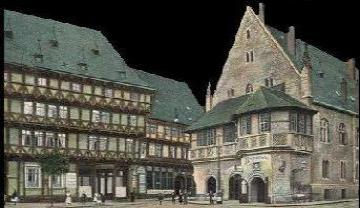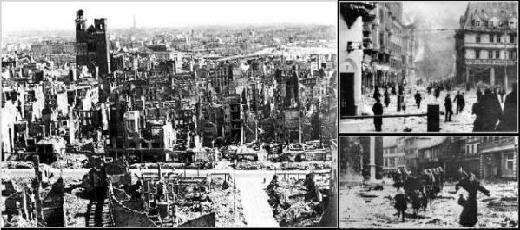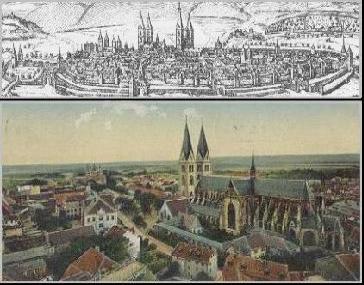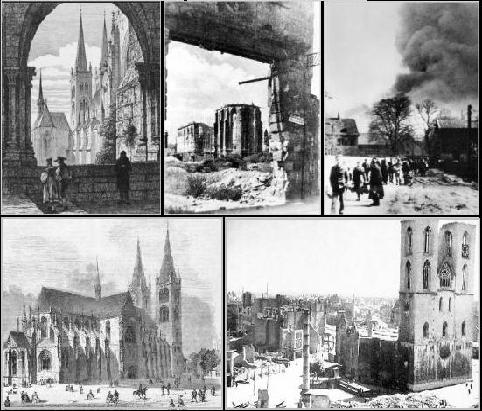




It is located in a fertile country to the north of the Harz Mountains and was made an episcopal see in the year 814. The town received a charter from Bishop Arnulf in 998. In 1113, it was burnt by the Emperor Heinrich V., and in 1179 by Heinrich the Lion. It was a popular trade point in the 13th-14th centuries. Then, during the Thirty Years’ War, it was occupied alternately by the Imperialists and the Swedes, the latter of whom handed it over to Brandenburg. The Bishopric of Halberstadt was secularized in 1648 according to the Peace of Westphalia and it became a Principality within Brandenburg-Prussia upon the downfall of Napoleon.
It later became home to the businesses of sugar, cigars, paper, gloves, sausage, machinery and beer. It survived the war until the end, when the Allies decided its number was up. On the late morning of April 8, 1945, at the very tail-end of the conflict, a single 16 minute attack by US bombers in an action nicknamed “Operation Sardine” swooped down from the sky like birds of death and destroyed nearly the entire historic town of Halberstadt in a massive, vengeful, unnecessarily violent bombing. The Americans at this point in the war had begun following the British tradition of bombing civilians.
As per the British method of incinerating antique towns, the detonating bombs first tore off the roofs and imploded the walls, which clogged the roads and destroyed the water lines so that the fires which broke out when the incendiary bombs rained down could not be fought. The tremendous heat melted the old church steeples and fried people to the roads. The city was 82% destroyed with its ancient center getting the worst of it. Over 550 tons of bombs fell on Halberstadt and in less than a half hour she lay in rubble and ashes, with 2,500 of its civilians dead. Only 1,350 of the bodies could they be identified, as the others were torn, mutilated, burned or mangled so horribly that their identity could no longer be established. Of the approximately 65,000 registered inhabitants of the city, 35,000 were left suddenly homeless as half of all residential buildings of the city disappeared in those few minutes.
There were disasters in cellars, bunkers, the hospitals, on the street and in the homes as people frantically fought for their lives. 900 commercial businesses no longer existed. In addition, all of the cultural facilities such as cinemas and theaters were totally destroyed, as were half of all hospitals and 3 schools (7 others were unusable). Electricity, gas and water were all gone. The main roads were impassable and the train station and trams were gone.
Three days after the destruction, the Americans moved into the city and they immediately freed foreign prisoners in nearby work camps and let them to run amok through the town of unprotected women and children and old folks, allowing them to rob, rape and loot everything they could get their hands on. In this scene of pain, stench, fear and grief, one and a half million cubic meters of rubble and debris covered the totally destroyed historic city center in an area of about 1.1 square kilometers, creating a rubble pyramid 100 meters high. The town was then handed over to the Russians for decades of decay and communist slavery.
After the collapse of the GDR, many of Halberstadt’s younger inhabitants lost their jobs and moved away and the town also has a severe declining birth rate. Population fell from over 48,000 in 1987 to about 38,000 today because so many inhabitants left in search of better prospects elsewhere.